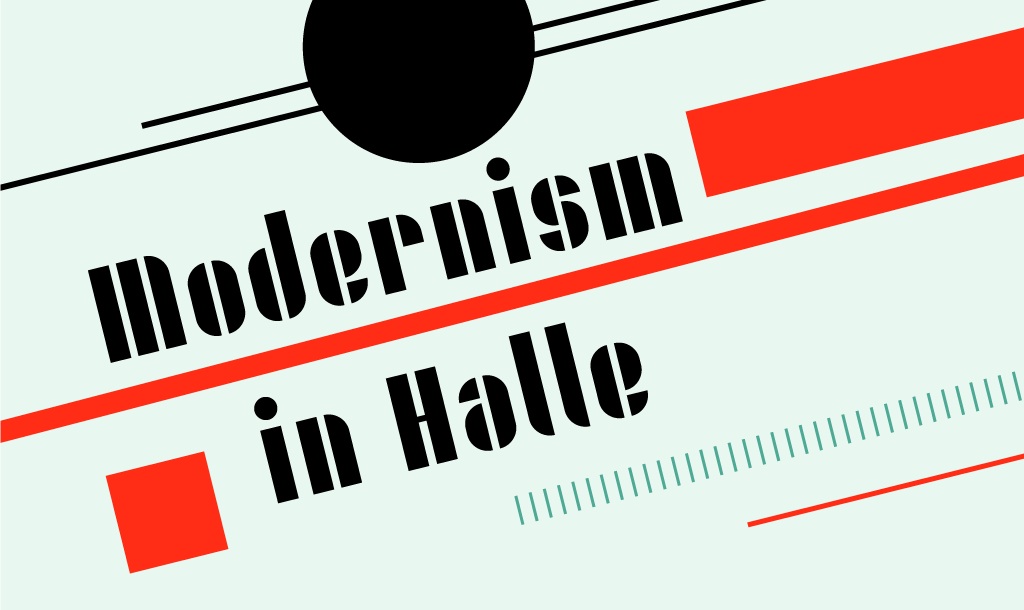
The places of modern building works in Halle are diverse and extraordinary. They can be seen in the architecture of housing estates but also in administrative and transport buildings, schools and churches as well as private and public buildings. We can find many examples of modern architecture, which was committed to designing buildings of the highest functionality with a reduction of form and material. The headquarters of the AOK general health insurance below the Moritzburg, the new Ratshof, which came forward from the second to the front row of the Marktplatz after the historic town hall had been demolished, and the multi-storey car park in the Pfännerhöhe, which caused a great stir and became symbolic of the beginning of an era of mobility are just a few examples. Halle (Saale) has entire housing estates from this exciting phase of construction of the 1920s; such as the Johannesplatz, the Vogelweide and the Lutherplatz. The centre of the “Luther estate” is characterised by the monumental water tower, which regulated the drinking and industrial water supply of the city and which was indeed proportional to the city’s unstoppable thriving industry. The Giebichenstein bridge, which connects the city and the Northern district of Kröllwitz, is one of the most remarkable testimonies of historical bridge construction; despite the weighty concrete, its modern, functional form makes it blend flawlessly into the Saale valley.
As evidence of this period of New Objectivity, Halle (Saale) also has a number of impressive churches. The Church of the Most Holy Trinity (Pfarrkirche Zur Heiligsten Dreieinigkeit), situated at the edge of the Lutherviertel, which was erected in the shape of a hexagon and resembles a honeycomb, is one of the architecturally most unique and extraordinary sacral buildings in Germany.
The extent and diversity of modernism in Halle (Saale) is illustrated by the unique school of art Burg Giebichenstein, which was founded by Paul Thiersch in 1915 and which drew many members of the Bauhaus from Weimar to Halle instead of Dessau in 1925. The city is thus not only characterised by ist architectural trumps after the turn of the century but also its cultural conquests. The museum of arts and crafts, the Moritzburg, added numerous high-profile acquisitions to its collection at this time. Amongst these were 24 paintings, which were purchased from the collection of Rosy Fischer (Frankfurt) in December 1924 and which included works by Ernst Ludwig Kirchner, Erich Heckel, Karl Schmidt-Rottluff, Emil Nolde, Otto Mueller, Oskar Kokoschka, Franz Marc, Pablo Picasso and others. A series of urban views in particular, which the Bauhaus master Lyonel Feininger was commissioned to execute between 1929 and 1931, is still a highlight of the Moritzburg’s collection today. In 1931, the city council of Halle (Saale) bought eleven paintings and 28 drawings by the artist for 31,200 Reichsmarks. After the National Socialists came to power, the works of Lyonel Feiniger and many others were defamed as “degenerate” and were dispersed into various other collections.
Today, the museum in Halle once again owns three paintings as well as numerous drawings and photographs. Visitors to the museum can experience Feiniger’s sources of inspiration on an interactive tour and will also fi nd the impressive perspective drawings of the Bauhaus master.
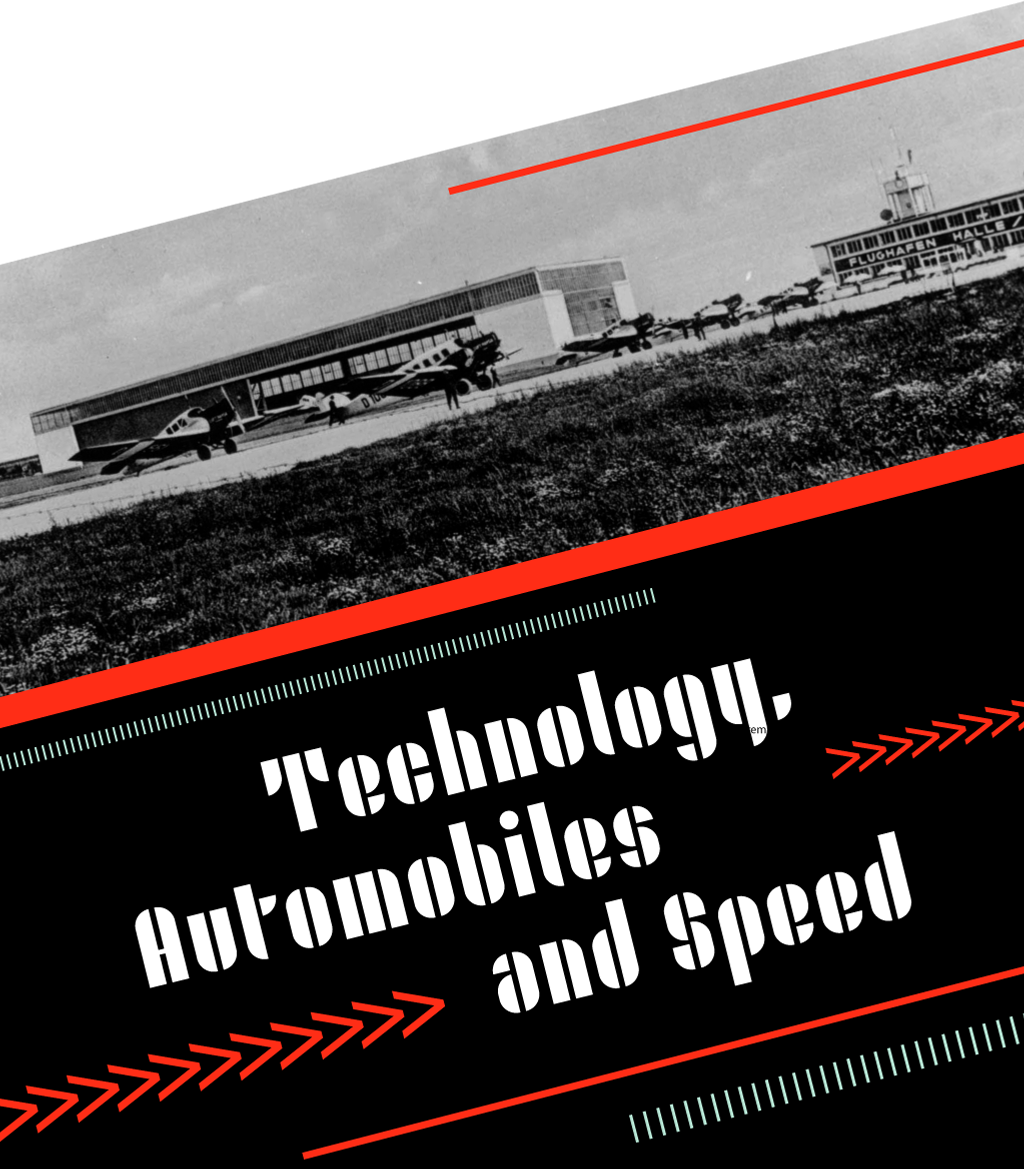
When the First World War ended in November 1918, the whole world breathed a sigh of relief. 17 million people had been killed. Almost the entire industry in Europe had been converted to produce armaments and was now looking for new possibilities. Many businesses saw potential in the automobile industry but things in Germany only calmed down after the hyper inflation of November 1923 and the introduction of the new Rentenmark and the economy gradually began to recover. In Halle (Saale) too the rationing of petrol and the registration restrictions for cars were lifted, so that 277 cars were registered by December; a year later there were 640.
The registration of motorcycles also rose inexorably. By now, almost every industrious and economical worker was able to afford a motor vehicle. Because of the economic boom, the first five years of the 1920s would go down in history as the legendary Golden Twenties. “Big, bigger” and “strong, stronger” was the motto; manufacturers were competing over who could produce an even bigger and even faster vehicle. Triggered by the reckless speed of driving, uniform traffic regulations were introduced; these were intended to control the ever-increasing amount of traffic and to prevent dangers for pedestrians as well as drivers. The triumph of the automobile was definitely unstoppable. Halle’s telephone directory of 1928 lists 110 companies that were working entirely or as suppliers for this new industry. The Germania machine factory on Dessauer Straße 5 and the Otto Kühn company developed and produced various mid-range cars, including saloons, sport-roadsters and convertibles. Otto Kühn alone engaged 700 staff and 100 employees. Even driving schools recorded a boom, so that there were nine in the city by the end of the 1920s. The construction of the multi-storey garage in Halle-Süd and the petrol station in the Merseburger Straße are still evidence of the visionary automobile boom in Halle (Saale). The development happening on the ground also began to take place in the air in the 1920s. The Grand Air Days, which were held on the race course in 1924, are now considered as being the trigger for the conception and construction of the airfield Halle-Nietleben. To begin with, the Air Traffic PLC (Flugverkehr Halle AG) was founded in 1925 and was given a plot in Halle-Nietleben on which to build an airfield. The official opening took place on August 15th 1925. From 1926, several European destinations were being flown to. A year later, scheduled flight operations were suspended and the airfield was used as a sports airfield from 1928. All civilian air travel was taken on by the newly opened Halle/Leipzig airport, which still operates today. Shortly after the opening of the airfield in Halle-Nietleben, the operators realised that it would not be able to meet the growing demands by the rapidly increasing number of passengers. A new airfield was enforced with the help of the Ministry of Transport, which was at this time aiming to classify the division of airspace. The new airfield was to be located in Schkeuditz and thus exactly half-way between Halle (Saale) and Leipzig. Paul Thiersch, the director of Burg Giebichenstein School of Arts and Crafts, took on the task of planning the airport. He placed a modern, circular airport in the centre and designed the airfield and hangar, as well as an administrative building. The airport Halle/Leipzig was opened on April 18th 1927. In May 1931, the modern and functional airport restaurant opened, which was designed by Hans Wittwer. Wittwer had been head of the department of architecture and interior design at Burg Giebichenstein School of Arts and Crafts. Halle/Leipzig airport was fourth in the ranking of the busiest airports in Germany in 1937.
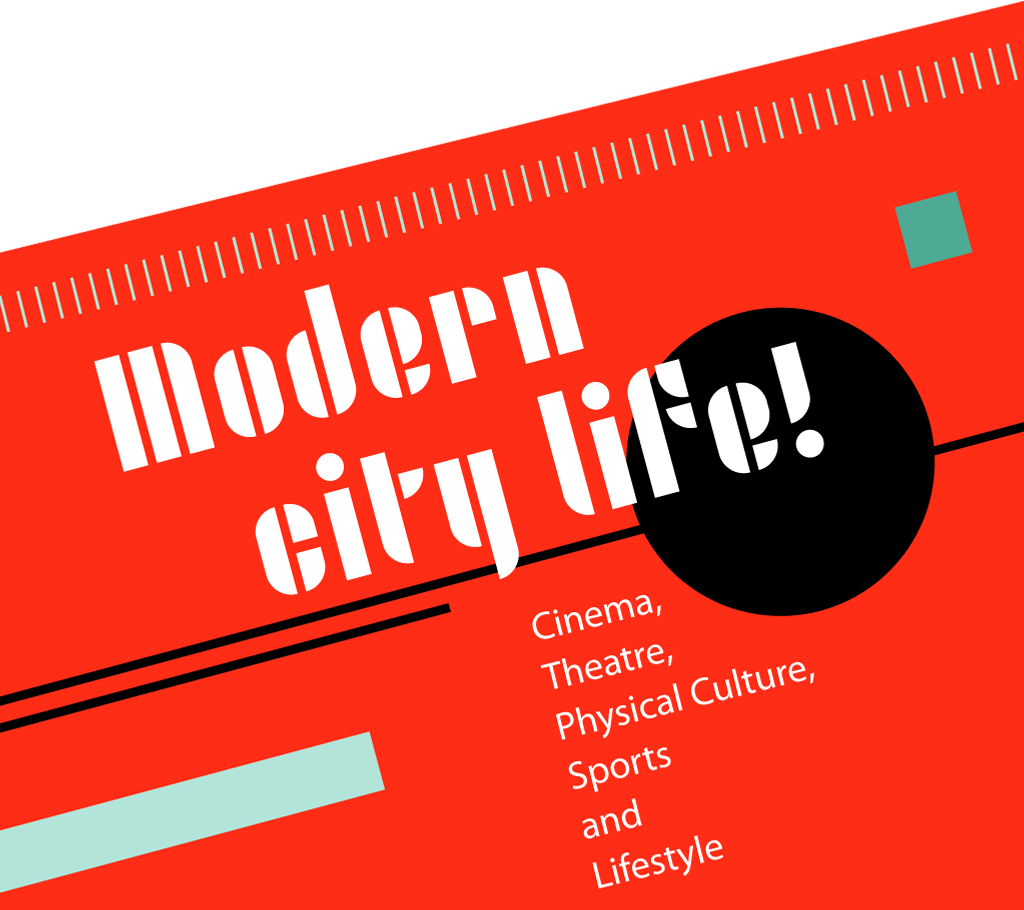
Photography and film played an important role at the Bauhaus. These new types of media reflected the modern zeitgeist after the First World War and quickly became the most influential mass media of the 1920s. In the time of the Weimar Republic, The Universum Film AG (UFA) in Potsdam grew to become the second largest film empire and film classics such as Dr. Mabuse (1922), Die Nibelungen (1924) and Faust (1926) ensured that they were to become a direct competitor for the film giants of Hollywood. A large number of the films produced by the UFA incorporated expressionist, surreal and experimental influences. After the Second World War, there were twelve movie theatres in Halle (Saale). The most important of these were three UFA picture palaces, the Lichtspiel-Palast Capitol and the Walhalla Theatre, which was a movie theatre in the 1920s. These cinemas of course also showed the classics of films history created in Potsdam-Babelsberg.
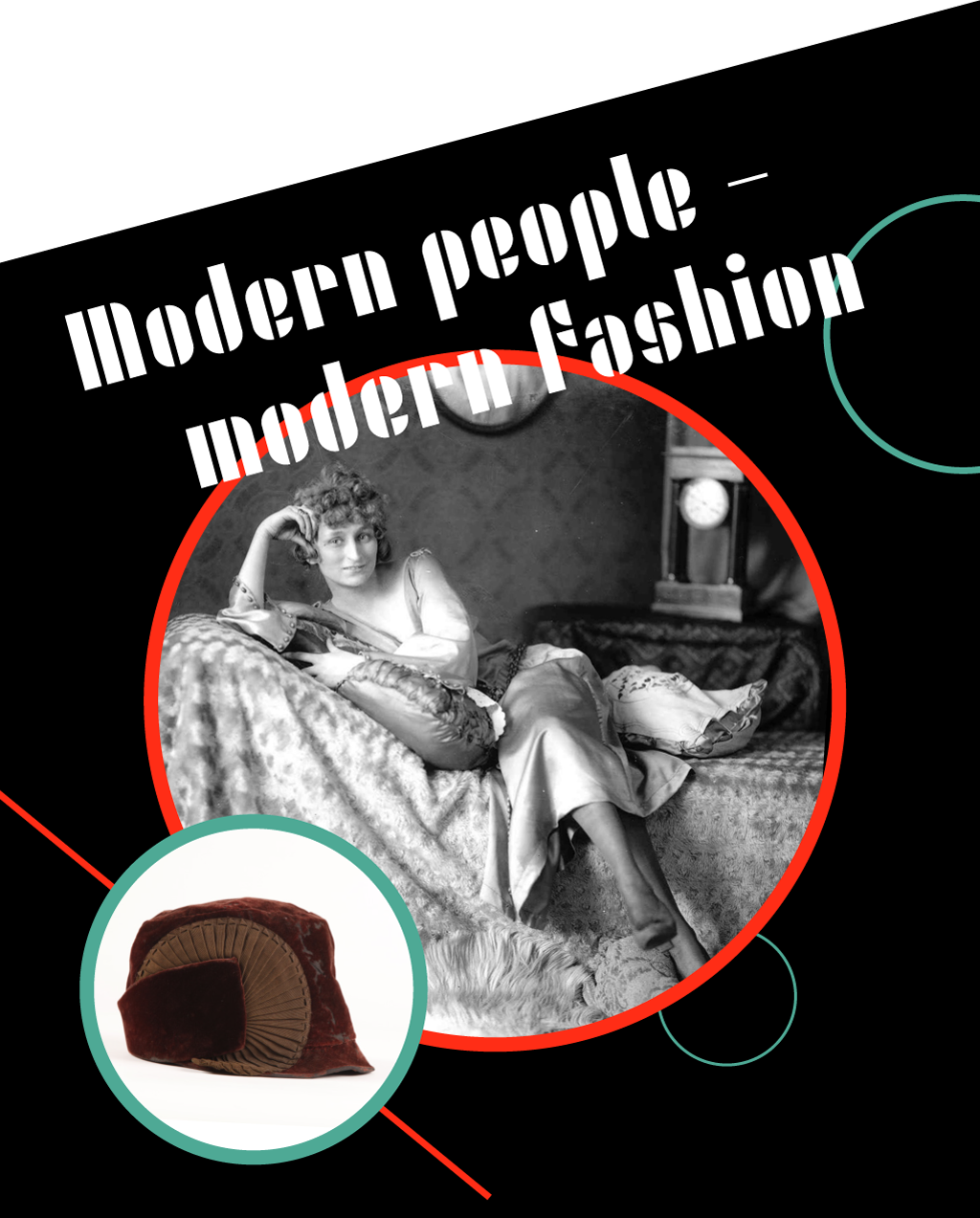
The typical outward appearance of Germany in the 1920s can be summarised essentially in the word modernity. This was most obvious in the cities that had been growing continuously in the years after the turn of the century. Halle (Saale) for instance, had 100,000 inhabitants in 1890. In 1905, it had 169,000 and in 1927, for the first time, the mark of 200,000 was surpassed, of people who felt at home in the big city and who created a new class of urban, working citizens: the workers. A considerable proportion of these were women who had, in recent decades, won their right to higher education: In 1892, the right to finish school, in 1900 the right to enrol at university, in 1919 the right to vote and in 1920, the right to habilitate.
Forced into an initially unfamiliar independence by the circumstances of the First World War, they learned to hold their ground in the formerly male-dominated domains of their public and professional lives. As working people, they had conquered hitherto unknown personal freedom in leisure activities, at least in the cities.
Women did sports, went to the cinema and met with friends in restaurants and bars, where they would smoke, drink and dance the Foxtrot, Tango or Charleston. In keeping with this new, independent self-image, the modern woman in Halle too dressed consciously fashionably and practically. She would do her shopping confidently in the department stores around the Marktplatz and along Leipziger Straße.
A striking new development were the hairstyles: For the first time, women wore short hair, in a pageboy haircut or a bob, or the Eton-haircut, which was even shorter. These hairstyles went well with small, tight-fitting hats. The German women modelled themselves on the fashion of the Paris Haute Couture, especially of Coco Chanel. The little black dress, a simple black dress that can be worn on almost any occasion with a variety of accessories, such as jewellery, handbag, make-up pouch and cigarette holder, has been a must-have in every woman’s wardrobe ever since.
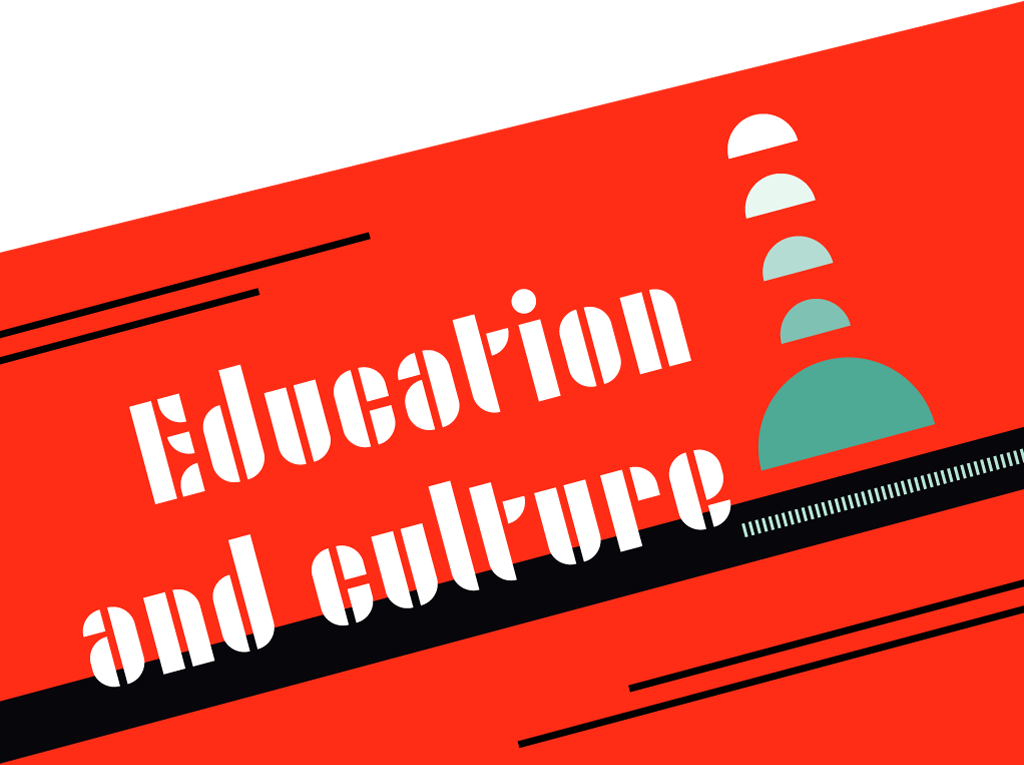
The economic power of the city was characterised first and foremost by the cultural and architectural trumps after the turn of the century. The museum of arts and crafts, the Moritzburg, added numerous high-profile acquisitions to its collection at this time. Amongst these were 24 paintings, which were purchased from the collection of Rosy Fischer (Frankfurt) in December 1924; this had been made possible through the former director of the museum and the lord mayor’s dedication to the cause. Max Sauerlandt and the mayor Dr. Richard Robert Rive had appealed to the magistrate and the city council. Thus, “the Museum in Halle has all at once moved into the front line of those galleries whose understanding of contemporary art means dealing with time and self-examination”, wrote the art historian and critic Will Großmann in 1925. The works from the Fischer collection included paintings by Ernst Ludwig Kirchner, Erich Heckel, Karl Schmidt-Rottluff, Emil Nolde, Otto Mueller, Oskar Kokoschka, Franz Marc, Pablo Picasso and others. “In this way, Halle will secure a considerable share of the intellectual and artistic development in Germany.” Other important works also came to Halle, including a series of urban views by Bauhaus master Lyonel Feininger, who was commissioned to execute the drawings by the museum’s director, Alois Schardt, between 1929 and 1931. Feininger was given a studio in the gate tower of the Moritzburg during this time. With a contract dated June 20th 1931, the city magistrate acquired eleven paintings and 28 drawings by the artist for the sum of 31,200 Reichsmark, made possible through a donation by the Lord Mayor Rive. After the National Socialists came to power, the works of Lyonel Feiniger and many others were unfortunately defamed as “degenerate” and were dispersed into various other collections. Today, the museum in Halle once again owns three paintings as well as numerous drawings and photographs.
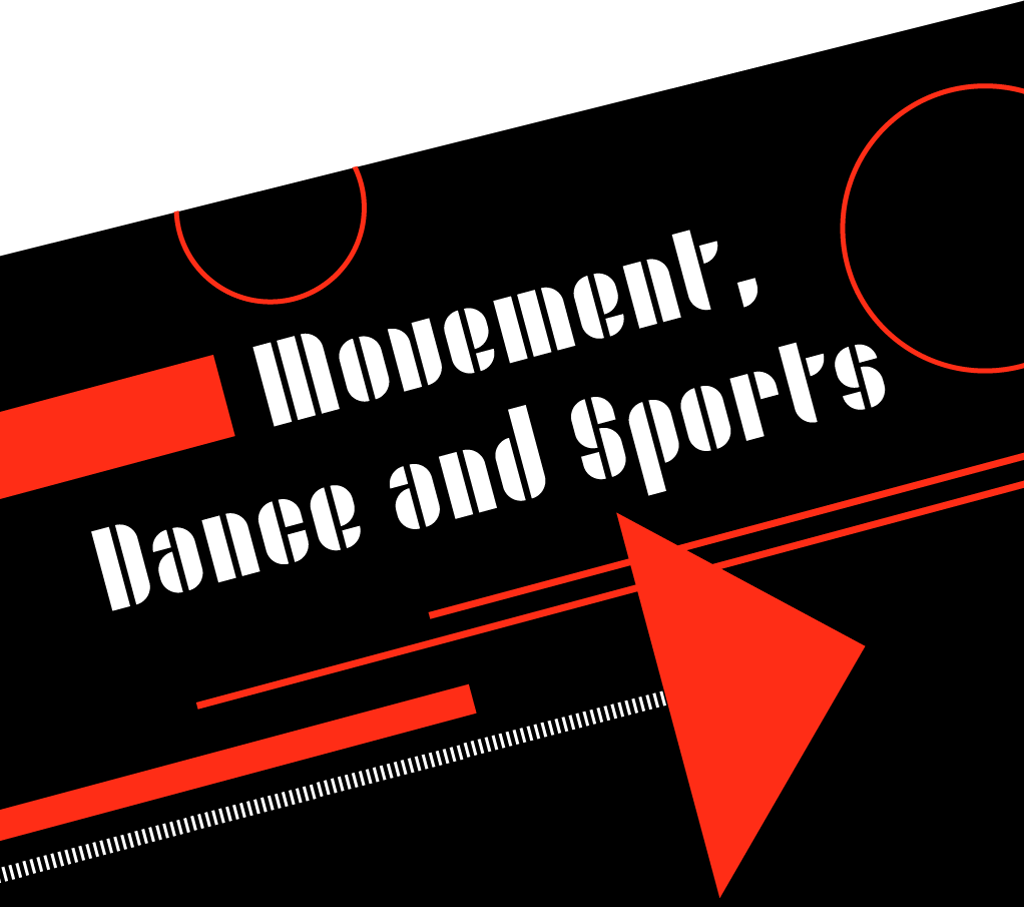
As at the Bauhaus school, Burg Giebichenstein School of Arts and Crafts had been holding parties since 1922. The first of these was a costume ball, which the sculptor Gustav Weidanz described in a postcard to his brother. After the Bauhaus school in Weimar was closed, many of the teachers were not drawn to Dessau but to Halle. One of them was the sculptor and graphic artist Gerhard Marcks, who became the head of the department of sculpture and then director of the school in 1928. He held this post until he was discharged in 1933. Marguerite Friedlaender-Wildenhain and Benita Koch-Otte came to Halle with Marcks. They were followed a little later by, amongst others, Erich Consemüller, Hans Wittwer and Heinrich Koch. It is no coincidence that the first festival, which students from both the Bauhaus and Burg Giebichenstein schools organised on December 4th and 5th 1925, was entitled Neue Sachlichkeit (New Objectivity) because the new Bauhaus people brought their ideas with them. Walter Gropius and László Moholy-Nagy came to Halle from Dessau with a large group of students in order to demonstrate an anti-bourgeoisie with protagonists from Burg Giebichenstein. The form and notation in the design of the invitation card was already evidence of the new spirit in Halle.
The highlights of the party were the ballet Homo mechanisatus, which was staged by Wolfgang Tümpel and which showed gymnastic performances accompanied by music and text as well as a dance competition and a fashion show. Tümpel had been a student in the metal class at the Bauhaus and continued his studies at Burg Giebichenstein. The performers of the ballet were all students from Halle. Homo mechanisatus was intended as a parodistic but also critical replica of Oskar Schlemmer’s Triadic ballet. The choreography and important stylistic devices indeed resembled elements of its model from the Bauhaus, the stage though was divided up into three elements: “Sound”, “Movement” and “Language” (see image).
The Burg Parties of the following years were clearly influenced by the unique New Objectivity party. Die Röhre, held on February 26th and 27th 1926 invited all guests to step into the party through a tube (see image). Another party came soon afterwards, in June. And in February of the following year, Erwin Hahs and his painting class organised a costume ball. In March 1929, the motto in the Burg studios was Keep smiling. Numerous other festivals were held every year until 1933, although the Rosamunde Summer Festival in June 1931 was already subject to the specifications of the National Socialists which meant the celebrations could not be as carefree as before.
Burg Giebichenstein and the Bauhaus played a crucial role in modern art because they both fought to liberate art and art education from its academic constraints. Not only did both schools succeed in conveying visual and applied arts in all its facets, but also in teaching movement, dance, theatre, music, space, form and literature.